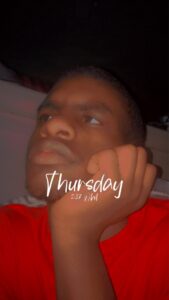

Written by: Harvin Bhathal, Peak Associate
School of Interactive Arts and Technology professor William Odom has designed a physical device that compiles data on the user’s music listening history.
The device, called Olo Radio, links to the user’s Last.fm account to gather the data. Last.fm is a music data aggregator that collects information on the music that an individual listens to, whether through Spotify, Apple Music, YouTube, CDs, etc., and stores the information. Olo Radio brings Last.fm’s service to a physical object that can be interacted with.
In an interview with The Peak, Odom explained that the device consists of a motorized slider, timeframe knob, and a volume knob. The timeframe knob can be set to “day,” “year,” or “life,” and then the user can choose a point within that timeframe by moving the slider.
According to Odom, Olo Radio presents an opportunity for self-reflection, and to consider one’s change and growth over time. It allows the listener to access the music of their past, and acts as a compilation of a lifetime’s worth of music. Odom noted that, “we’re really trying to create things [ . . . ] that can be a part of your life over a long period of time.”
“One of the bigger agendas here is to try to change [the] design… of consumer electronics and the way in which we design and [think].”
Odom drew inspiration from Finnish designer Alvar Aalto and his mid-century works with the use of wood tones and steel. He described the design as Scandinavian and Japanese, and stated that the appearance of the device suggests a physical and mental balance.
The human-computer interaction is an important part of Olo Radio; Odom intended it to emphasize “human agency and creativity within the person as opposed to the machine.”
Tijs Duel, an intern of Odom’s, was a collaborator on the project.
In an email interview with The Peak, Duel said: “I see reminiscing and reflection essential in the development of the self. These activities can be triggered and supported through mementos and media.”
He noted that Olo Radio provides “new and meaningful ways to explore our digital collections to get the most out of them.”
Currently, there are five custom-designed Olo Radio’s that have been installed in homes in the greater Vancouver area to get a feel of the experience over time.
When asked what the first song he heard when first using Olo Radio, Odom laughed as he reminisced on a song from JPEGMafia’s Veteran album.
In terms of future applications for Olo Radio, Odom stated that “one of the bigger agendas here is to try to change [the] design [ . . . ] of consumer electronics and the way in which we design and [think].”





